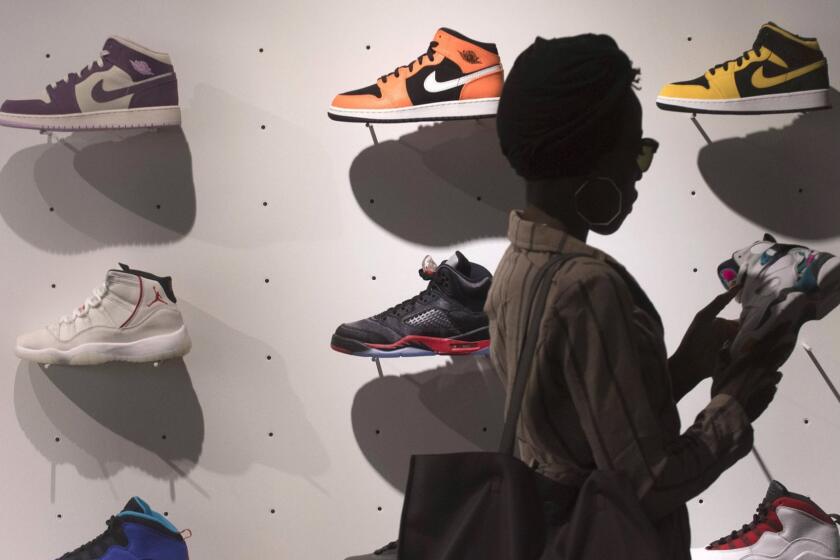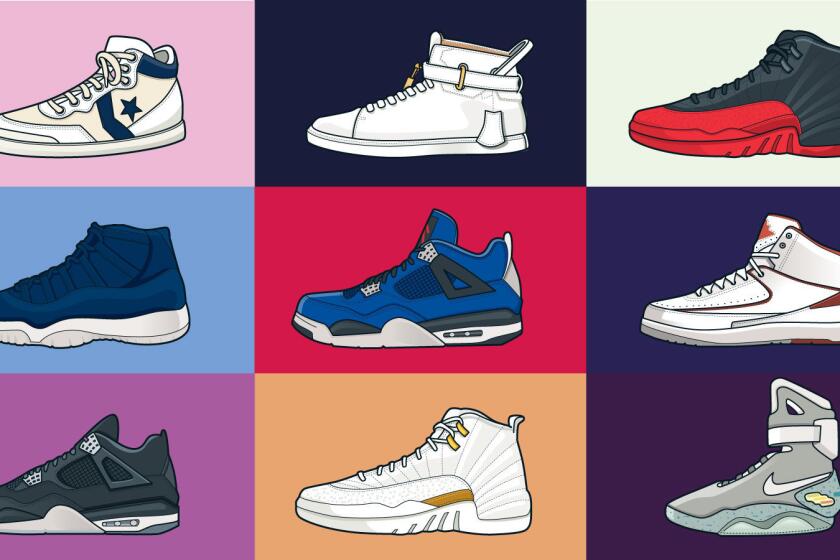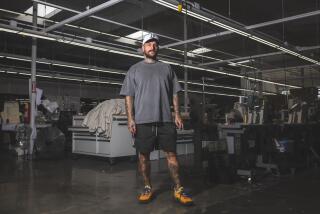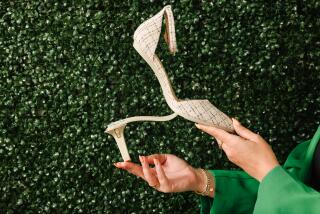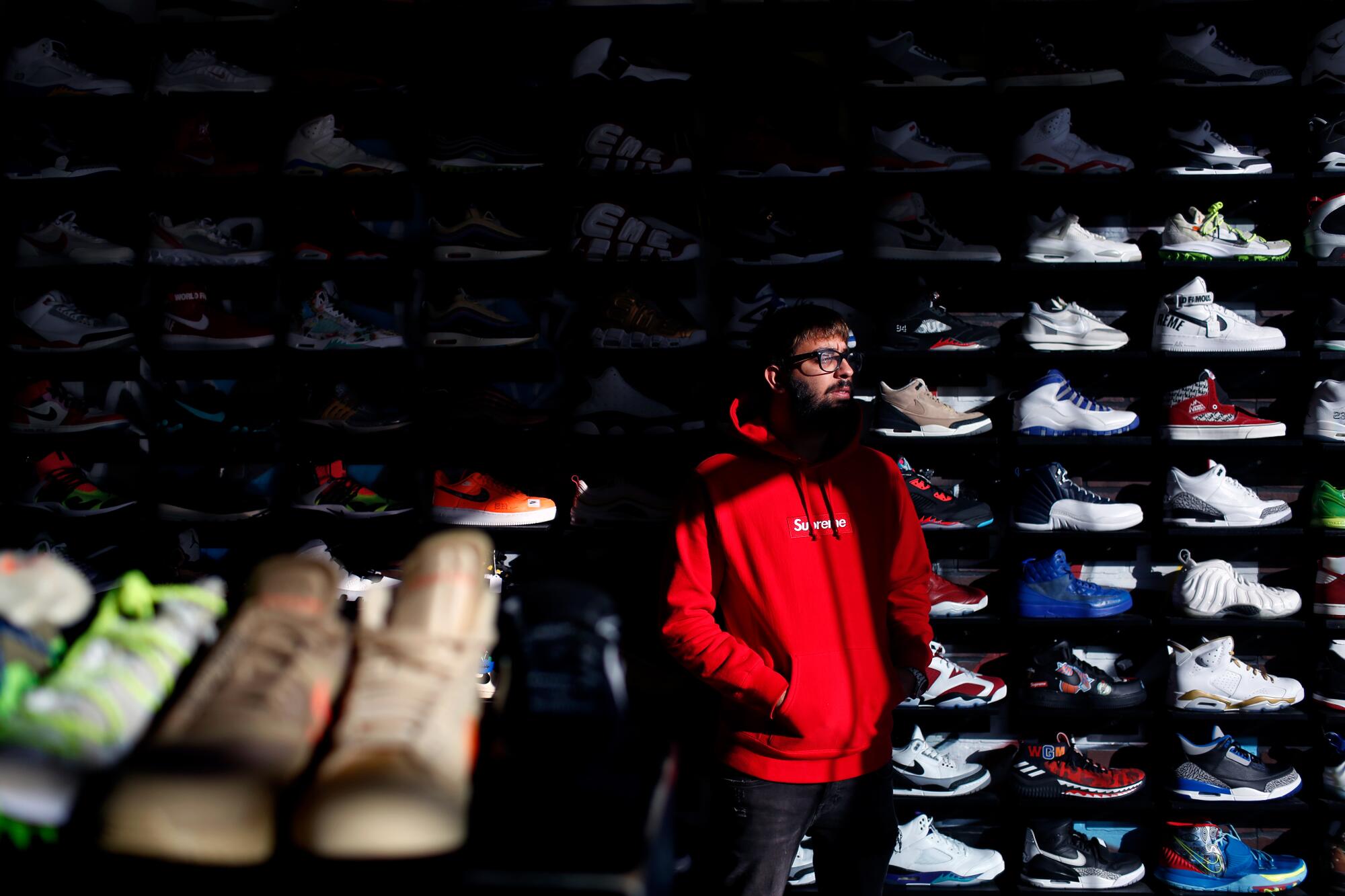
A wedding. Transmission repair. Bail money.
Those are some of the reasons why more and more sneaker collectors are cashing out the shoes they have lovingly amassed over the last decade or so.
Most were facing sudden expenses that threatened to throw their finances into disarray because student loans, rent payments, avocado toast and the like had pushed them into a cash-flow corner.
Roughly 6 in 10 U.S. adults don’t have enough savings to cover a $1,000 emergency room visit or car repair, according to New York financial services company Bankrate. For young adults, the savings picture is slightly worse, Bankrate said.
Los Angeles hairstylist Sabrina Ahmed, 28, is one. Faced with a $9,000 bill for unpaid federal taxes, Ahmed reluctantly parted with 12 pairs of sneakers last year, including a pair of Nike Air Force 1 Low Off-White MCA University Blue, listed on some reseller sites for at least 10 times the original $150 retail price.
“I loved that shoe,” Ahmed said. “But it felt like having a security blanket I didn’t know I had.”
“My parents don’t come from money, so I can’t ask them for help. I have no one for that kind of help, so it’s become a passion that is also helping me out financially.”
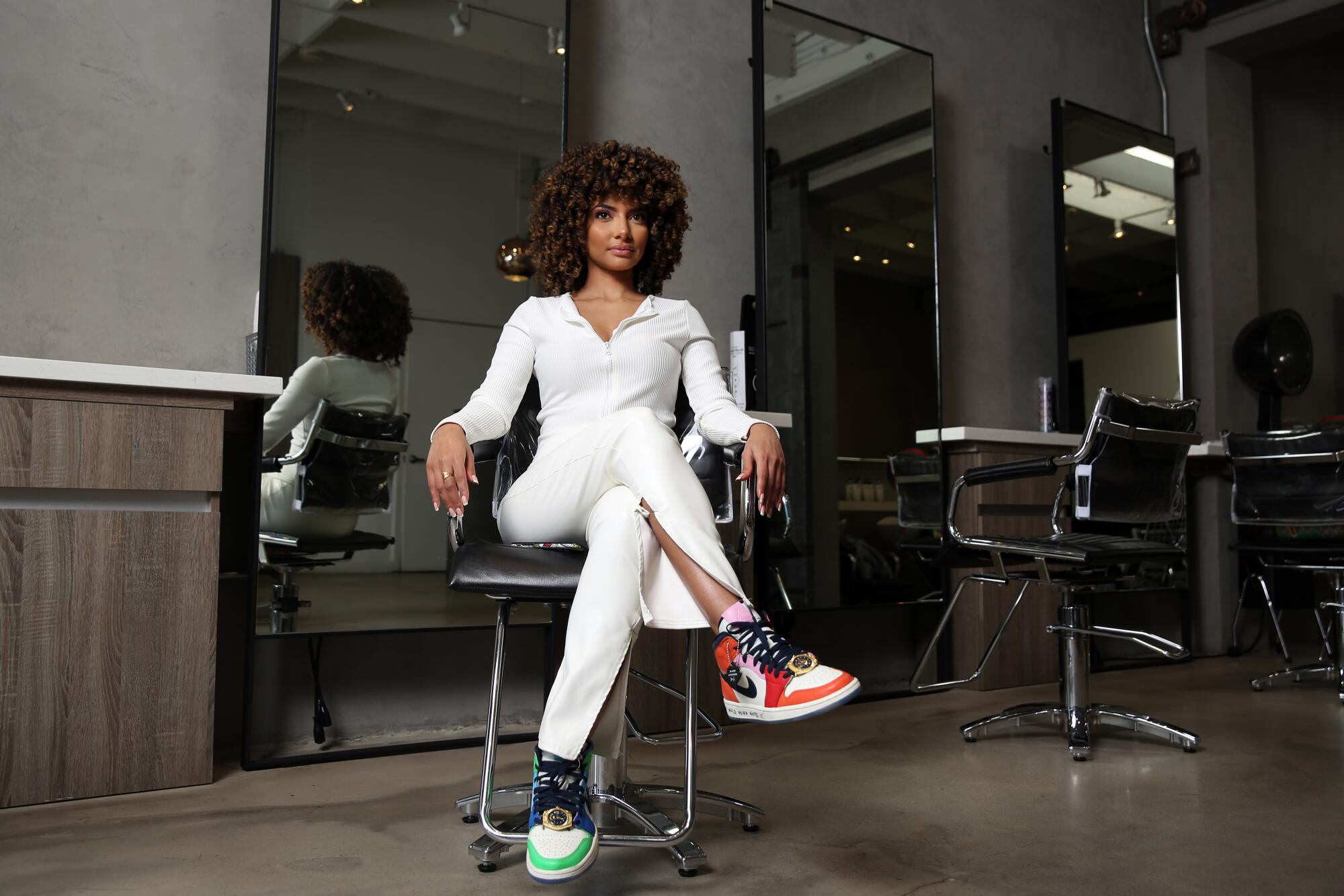
Nike’s 1984 creation of the revolutionary Air Jordan basketball shoe, followed by the NBA banning them from professional play, is the moment that sneakers became more than mere shoes, and sneaker culture — as well as collecting — began in earnest, said Dylan Dittrich, author of “Sneakonomic Growth: Scarcity, Storytelling and the Arrival of Sneakers as an Asset Class.”
The explosive success of that shoe and others, demonstrated by long lines outside sneaker boutiques during product drops, and the blossoming of the EBay auction site helped feed a fast-growing sneaker resale industry. The more recent proliferation of resale sites, including Detroit-based StockX and Los Angeles-based GOAT, has given collectors an even greater ability to turn a tidy profit.
Now, the secondary sneaker market is attracting a different kind of seller, interested in unloading most or all of their shoe hoards.
They are being served by resellers that have switched their business practices to buy in bulk rather than limiting collectors to consign items pair by pair.
CoolKicks, which opened on Melrose Avenue in 2016, has handled a raft of emergency sneaker collection sales, ending 2019 with $9 million in revenue, up about 30% from $6.9 million in 2018, said Adeel Shams, 28, who founded and owns the business with friends Davon Artis, 28, and Bereket Abraham, 33.
“I’ve literally heard every story in the book,” Shams said. “First reason for sure is bills, things like rent money. Second would be more personal reasons, someone’s brother or sister is in jail and they needed bail money. Another I’ve heard is emergency hospital bills. Another common one I have heard lately is that their girlfriend is pregnant.”
Like many traders, Johan Aguirre makes a daily check on his holdings’ ups and downs across an electronic spreadsheet.
The sneakerhead population has also begun to age out in terms of interest, Shams said.
“There are collectors who have been doing this for over a decade, and they have come to a point where they think there is oversaturation and younger generations taking over,” Shams said. “The OGs, as we call them, they are at the age now where they are selling and just putting the money into something different.”
Shams is expecting revenue of $15 million this year. He and his partners have plans to open five to 10 more stores in major cities, including New York, Miami and Las Vegas, in the next three to five years.
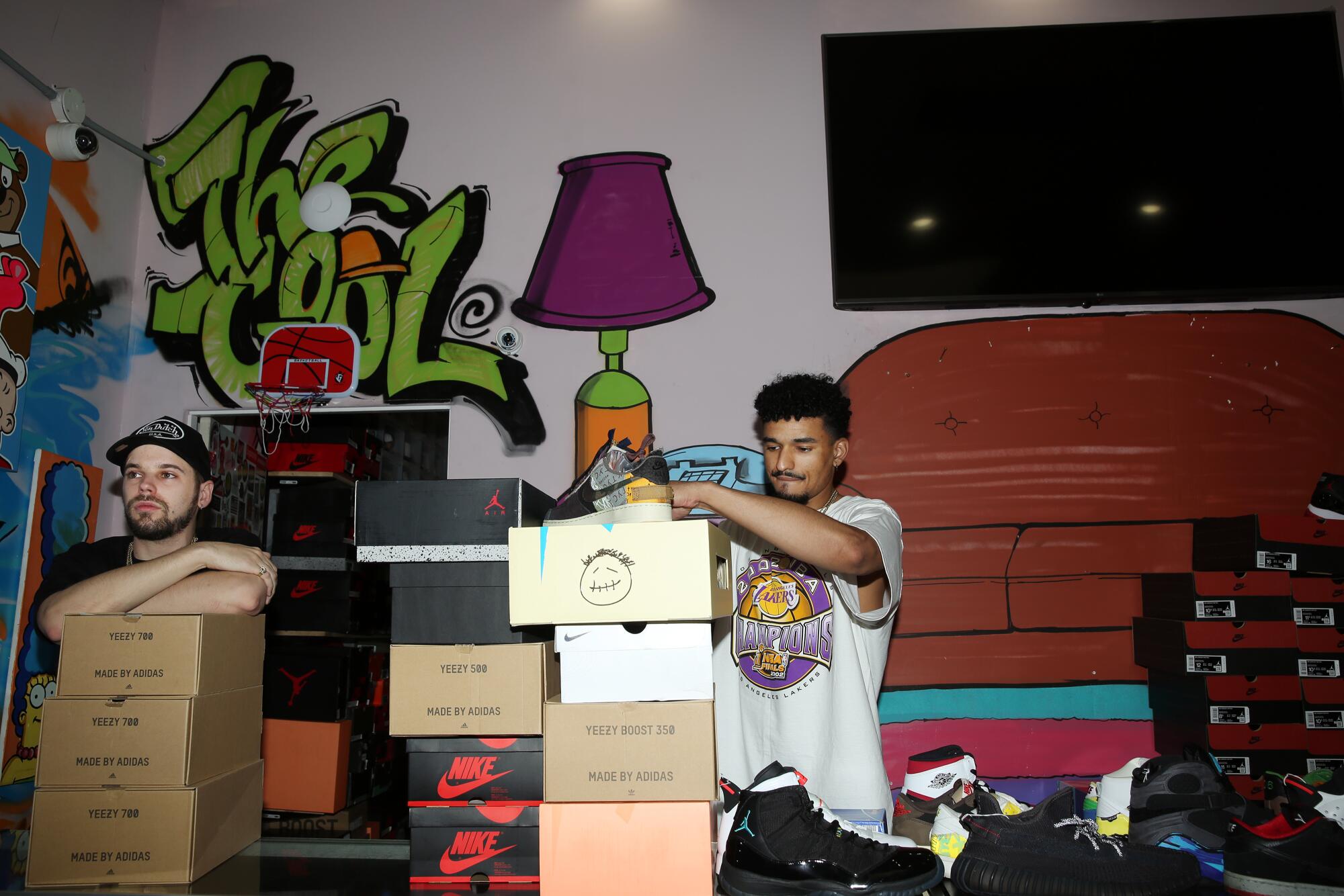
CoolKicks encourages sneakerheads to bring in their collections directly to the store. But Shams will also do the occasional home visit, and he’s learned with almost geometric precision how to stuff dozens of shoe boxes into the relatively tight confines of his Maserati Ghibli, “leaving me just enough room to maneuver my steering wheel,” he quipped.
Both types of sales, sometimes involving various hip-hop stars and sneaker influencers, are regularly chronicled on the brand’s popular YouTube channel and social media platforms.
“We were chasing a dream and it was a huge risk,” Shams said. “It’s ended up becoming a big success for us.”
Sneakerheads call them “holy grails” — the most coveted and seldom-seen treasures, akin to that Last Supper tableware that medieval knights never tracked down.
Derek Lew, founder and owner of Sole Supremacy in Newark, Calif., said that sneakerheads are maturing into new responsibilities, “just moving on with needs in life more than wants.”
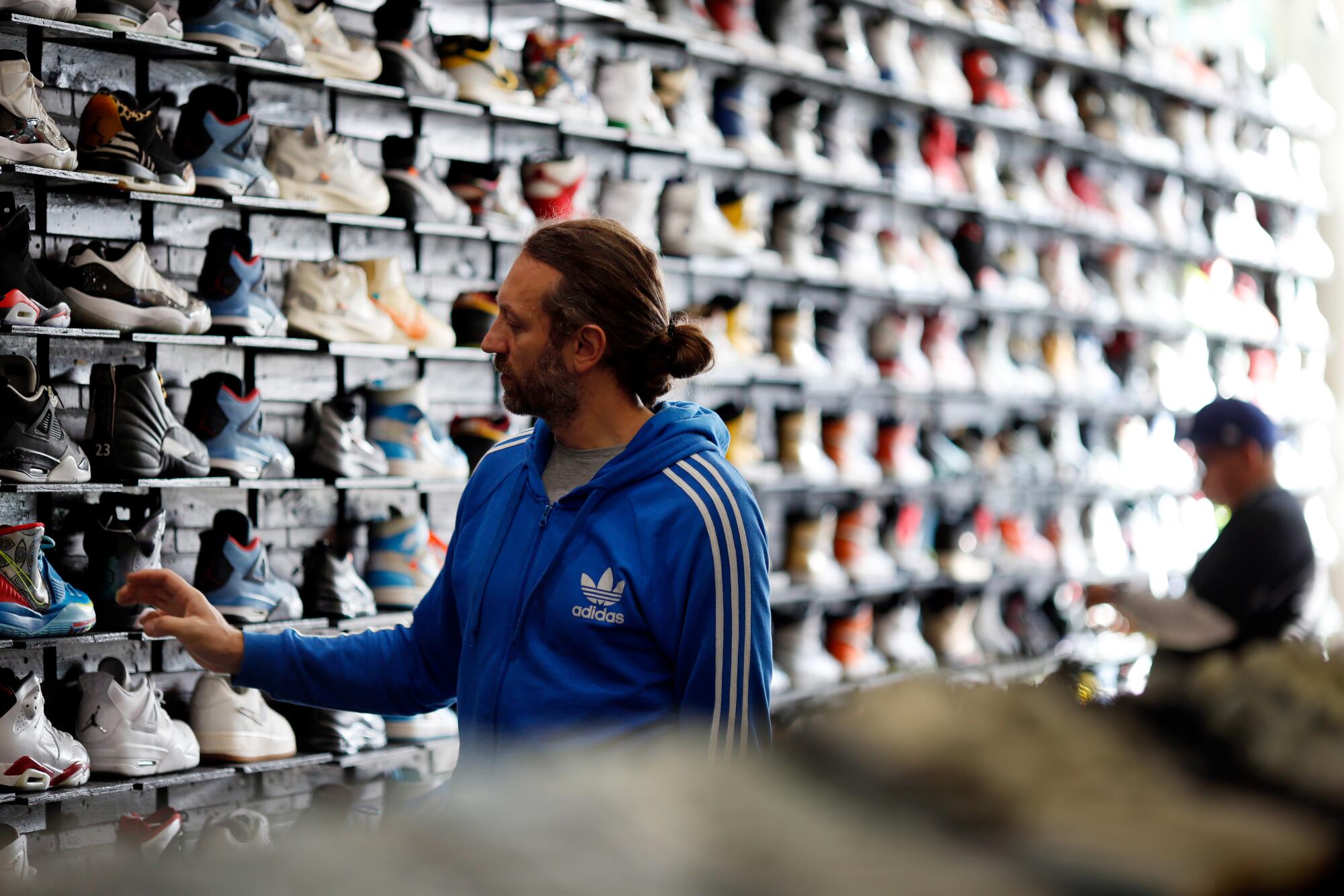
Lew said he prefers to buy entire collections, but competition has become keen. “There are lots of stores popping up every few months over the last few years.”
The secondary market for sneakers is about $2 billion a year, with the potential to reach $6 billion in annual sales by 2025, according to investment bank Cowen Inc.
Sneaker collections, the Cowen report said, have become an emerging alternative asset class.
Manuel Cruz, 37, who works as a wholesale European auto parts distributor, sold most of his collection for $24,000 at CoolKicks last year, enough to pay for his wedding to wife Vivian, fund a honeymoon in Hawaii and start building a down payment for a house.
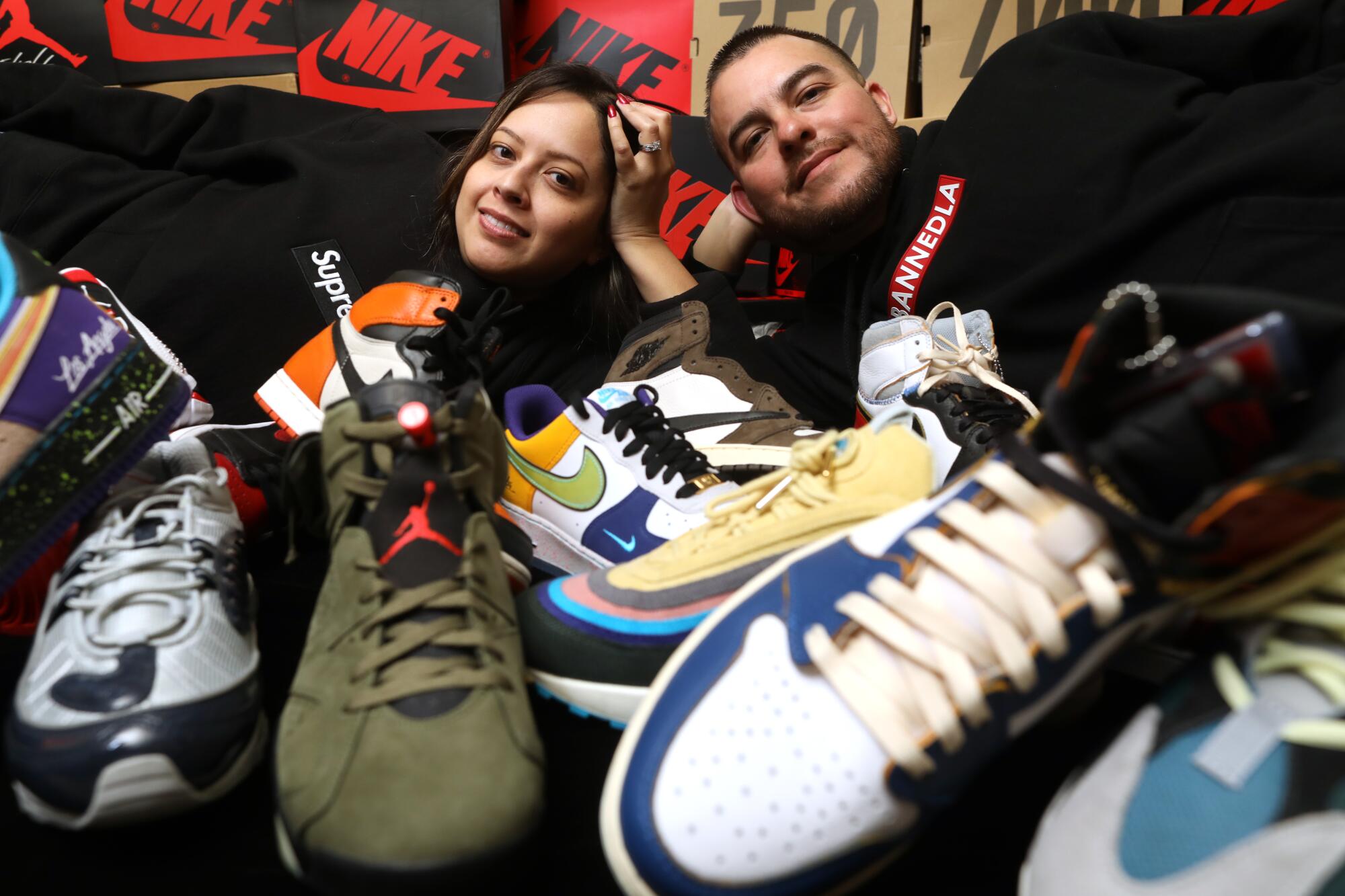
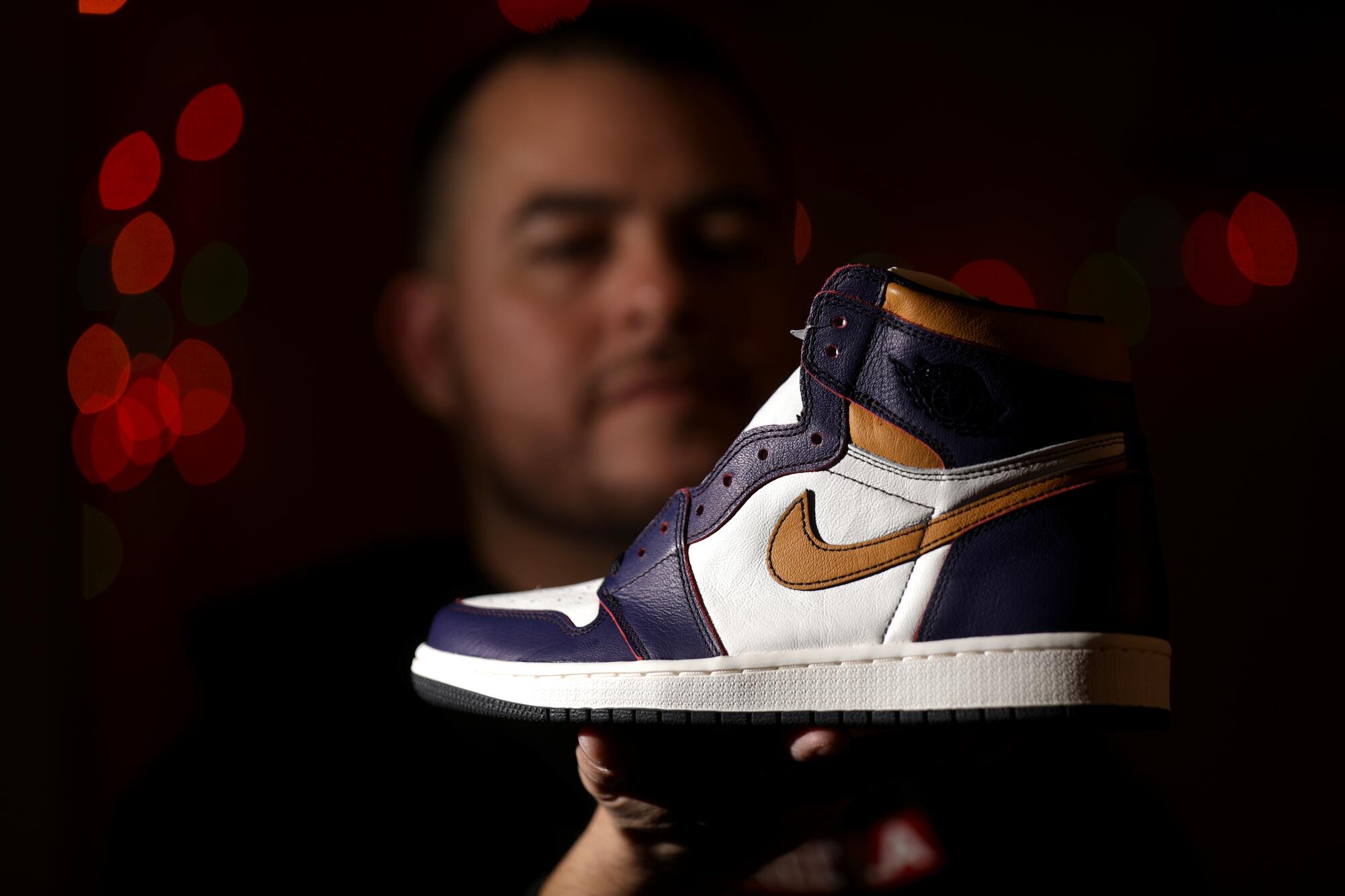
Cruz liked that there was no consignment store delay, where a hopeful seller hands over the shoes and waits for a buyer to come along. Among the shoes Cruz unloaded were two pairs of Jordan 1 Retro Satins; each pair retailed for $175 in April 2017 and in the last year have sold for as much as $2,130 on reseller sites.
“Getting prepared to start my new adventure, it made me feel good to make that kind of money on my collection,” Cruz said.
But sneakers don’t make an ideal fallback, certified financial planner Delia Fernandez said.
“When you sell a collectible, Uncle Sam wants you to pay taxes on any gains” above the original money invested, said Fernandez, who is based in Los Alamitos. “If they have sold at a profit they really should be setting some of that money aside for federal capital gains tax of about 28%.”
What’s more, sneakers are much different from other kinds of collectibles, Fernandez said. They weren’t built to last, and the desire to show them off means collectors aren’t willing to leave them at home where no one can see them.
“It’s almost like a game of musical chairs. You buy the shoes and you have this window or four or five years in which to sell them. The last person to buy that shoe better know what he or she is is doing.”
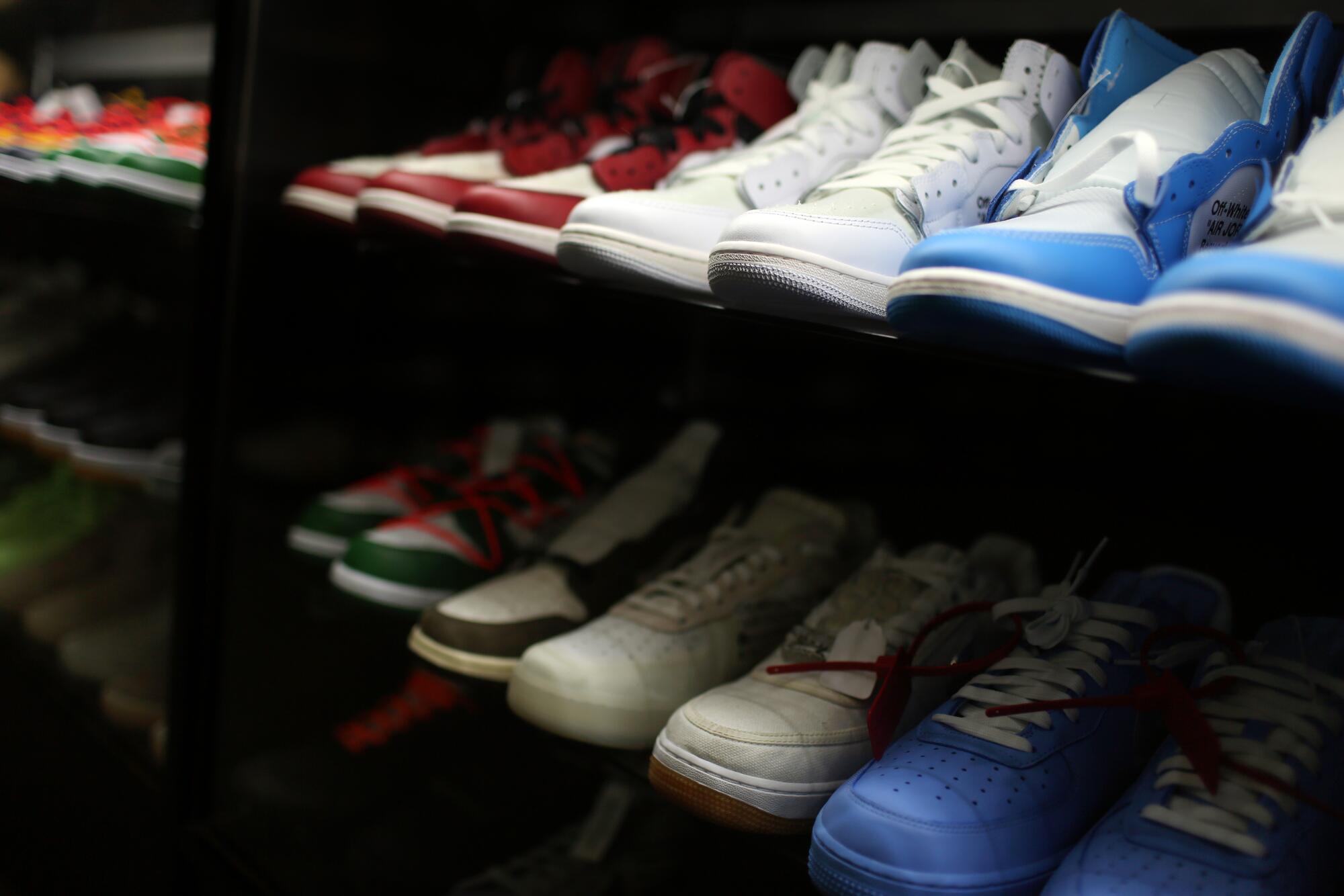
At CoolKicks, Manager Curtis Costello is the guy who gives a thumbs up or down on whether the store will be buying all or just part of a collection. Like the time when a customer brought in 100 shoes that Shams said he might be interested in, but Costello rejected 54 of them because they were no longer in prime condition.
“If the shoes are eight years old they can tend to fall apart. The glue will deteriorate and the shoe will separate,” said Costello, 29.
“Also, the paint will crack. If it’s a really old shoe, sometimes it’ll just crumble in the box, by itself. The shoe can also yellow over time. If it’s an ice bottom, the clear type of outsole, it can suffer from oxidation. If it’s an ice blue, it’ll turn green or yellow over time. The white midsoles will also turn yellow.”
Clear gel inserts, Costello said, can become cloudy or even brittle and can shatter when the shoe is worn, all of which are reasons not to buy it, he said.
For Qias Omar, a 31-year-old sneakerhead with about 1.3 million subscribers on his Qrew TV YouTube channel and about 674,000 Instagram followers, constant resale is part of his business.
“If I bought a shoe a year ago, it doesn’t make sense for me to still have that shoe unless it’s something that I really love,” the Los Angeles sneaker influencer said. “So I like to get rid of shoes to buy new shoes so that I can continue to have the hottest products to be able to make content around it.”
Hollywood film editor and director Greg Plotkin uses the proceeds from winnowing his collection to indulge his two sons’ growing interest in collecting.
“For me, it’s a fun cycle,” said Plotkin, whose film credits include editing “Hell Fest” and directing “Paranormal Activity: the Ghost Dimension.”
“When my sons need shoes, I’ll say, ‘I’ve got three pair of those Jordan Ones, I’ll take two and trade them for something my sons want,’” he said. “The money had already been spent once years ago, and I didn’t feel bad about it. I didn’t spend any new money.”
More to Read
Inside the business of entertainment
The Wide Shot brings you news, analysis and insights on everything from streaming wars to production — and what it all means for the future.
You may occasionally receive promotional content from the Los Angeles Times.
